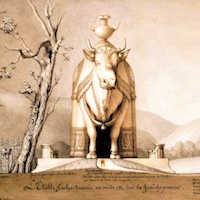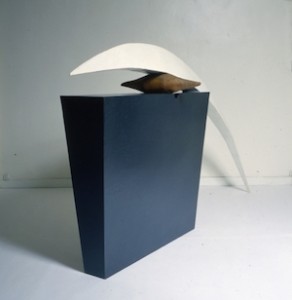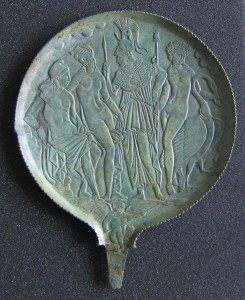Posté par Pascale Dubus, le 21 janvier 2019;
- Date et lieu du colloque : 15-17 août 2019, Suède, University of Gothenburg.
- Date limite : 30 janvier 2019
 What is real and what is fake? And why does it matter? As soon as objects, texts and utterances (be they pragmatic or artistic) become imbued with a sense of authority or authenticity, there is a potential to produce other objects, texts and utterances which mimic and attempt to siphon off that authority and authenticity. In late medieval and early modern European culture (1400-1750), this potential was realized in new and unprecedented ways. Social, technological, and intellectual developments forever altered many activities which fall under the remit of forgery and fabrication, spurring lively debate about truth and falsity. The printing press transformed the production, distribution . . . → En lire plus What is real and what is fake? And why does it matter? As soon as objects, texts and utterances (be they pragmatic or artistic) become imbued with a sense of authority or authenticity, there is a potential to produce other objects, texts and utterances which mimic and attempt to siphon off that authority and authenticity. In late medieval and early modern European culture (1400-1750), this potential was realized in new and unprecedented ways. Social, technological, and intellectual developments forever altered many activities which fall under the remit of forgery and fabrication, spurring lively debate about truth and falsity. The printing press transformed the production, distribution . . . → En lire plus
Posté par Denis Dubois, le 23 novembre 2015;
- Date limite : 15 janvier 2016
- Date et lieu de la journée d'études : 27 mai 2016, Nantes
 Faux témoignages ; faux documents administratifs ; fausses œuvres d’art ; fausse monnaie ; fausses chartes ; sceaux inauthentiques ; photos truquées ; sites historiques déplacés ou réinventés, etc. : faux, forgeries, contrefaçons, recréations sont courants parmi les objets et les sources de l’enquête historique. Faux témoignages ; faux documents administratifs ; fausses œuvres d’art ; fausse monnaie ; fausses chartes ; sceaux inauthentiques ; photos truquées ; sites historiques déplacés ou réinventés, etc. : faux, forgeries, contrefaçons, recréations sont courants parmi les objets et les sources de l’enquête historique.
Selon leurs différents systèmes de valeurs qui s’articulent dans le temps et dans l’espace, chaque époque, région et civilisation a son propre genre de faux. À titre d’exemple, la diffusion de la culture de l’écrit, notamment par le biais de l’imprimerie, permet à une société plus large d’accéder au savoir écrit et particulièrement livresque, ainsi qu’à son lot de contrefaçons, à . . . → En lire plus
Posté par Pascale Dubus, le 13 juillet 2015;
- Date limite : 15 septembre 2015
- Date et lieu du colloque : 17-18 décembre 2015, Royaume Uni, University of Cambridge.
 This interdisciplinary conference aims to bring together scholars from the sciences, social sciences and humanities in order to address material practices of mimesis. Aristotle, in one of the first definitions of the concept, argues that mimesis, or the imitation of nature, refers to both form and material. Thus far, scholarship has mostly focused on the role of form in mimetic practices, while the mimetic role of materials, despite the many disciplines in which these are central to making and knowing, remains significantly understudied. This interdisciplinary conference aims to bring together scholars from the sciences, social sciences and humanities in order to address material practices of mimesis. Aristotle, in one of the first definitions of the concept, argues that mimesis, or the imitation of nature, refers to both form and material. Thus far, scholarship has mostly focused on the role of form in mimetic practices, while the mimetic role of materials, despite the many disciplines in which these are central to making and knowing, remains significantly understudied.
Materials play a fundamental role in mimetic practices, from the earliest known examples to some of the most recent. Ancient ceramic vessels, for instance, some nearly . . . → En lire plus
Posté par Sarah Feron, le 21 avril 2015;
- Date et lieu du colloque : 7 et 7 mai 2015 - Auditorium de la Galerie Colbert - INHA

Miroir à relief du Jugement de Pâris dit Miroir Strozzi, Provenance : nécropole de Sovana (Etrurie). Vers 300 avant J.-C. Collection Dutuit, musée du Petit Palais. Cliché : Claire Martin
La fabrique du faux concerne sans exception tous les domaines du savoir. Mais même cantonné à l’antiquité, le sujet du faux en tant qu’œuvre ou en tant que . . . → En lire plus
Posté par apahau, le 13 février 2015;
- Date limite : 30 mars 2015
- Date de remise des textes : 1er juin 2015
 Ce neuvième numéro de Trajectoires se propose d’étudier, de manière interdisciplinaire, la place, le statut et les implications des notions de mensonge et de manipulation dans les sciences humaines et sociales. Le mensonge sera considéré comme un objet théorique autant qu’empirique, et cela à plusieurs échelles : du mensonge idéologique ou institutionnel jusqu’aux phénomènes quotidiens, comme les formules de politesse ou la publicité. Ce neuvième numéro de Trajectoires se propose d’étudier, de manière interdisciplinaire, la place, le statut et les implications des notions de mensonge et de manipulation dans les sciences humaines et sociales. Le mensonge sera considéré comme un objet théorique autant qu’empirique, et cela à plusieurs échelles : du mensonge idéologique ou institutionnel jusqu’aux phénomènes quotidiens, comme les formules de politesse ou la publicité.
Le mensonge peut se définir comme la transmission d’une information sciemment déformée à des fins conscientes ou inconscientes. Le mensonge n’est pas réductible à un acte de langage – quoiqu’il en prenne souvent . . . → En lire plus
Posté par Pascale Dubus, le 21 décembre 2014;
- Date et lieu du colloque : 29-31 octobre 2015, Munich, Ludwig-Maximilians Universität.
- Date limite : 15 mars 2015
 Fakes, forgeries and counterfeits are omnipresent as works of art, branded products, biographies, satellite pictures, documents, news, research results, testimonies. They are mimetic practices of unique cultural, economical and political relevance. They alter reality, make history and perform cultural work. As their impact contrasts with their negative connotation, why are they still first and foremost considered as fraud, as deceit, as the shadow of a creative act ? Fakes, forgeries and counterfeits are omnipresent as works of art, branded products, biographies, satellite pictures, documents, news, research results, testimonies. They are mimetic practices of unique cultural, economical and political relevance. They alter reality, make history and perform cultural work. As their impact contrasts with their negative connotation, why are they still first and foremost considered as fraud, as deceit, as the shadow of a creative act ?
The conference aims to engage an interdisciplinary dialogue on the potential impacts of fakes, involving literature, performance and media studies as well as art history and musicology, with their diverging media and . . . → En lire plus
|
Équipe Rédacteur en chef : Olivier Bonfait.
Rédacteurs : Elliot Adam (Moyen Age) ; Nicolas Ballet (XX-XXIe siècles) ; Matthieu Fantoni (musées) ; Antonella Fenech Kroke (bourses) ; Vladimir Nestorov (Lettre mensuelle)
Administrateur web : Matthieu Lett.
ancien éditeur : Pascale Dubus
anciens rédacteurs : Gautier Anceau, Sébastien Bontemps, Damien Bril ; Sébastien Chauffour ; Ludovic Jouvet ; Aude Prigot
|
 What is real and what is fake? And why does it matter? As soon as objects, texts and utterances (be they pragmatic or artistic) become imbued with a sense of authority or authenticity, there is a potential to produce other objects, texts and utterances which mimic and attempt to siphon off that authority and authenticity. In late medieval and early modern European culture (1400-1750), this potential was realized in new and unprecedented ways. Social, technological, and intellectual developments forever altered many activities which fall under the remit of forgery and fabrication, spurring lively debate about truth and falsity. The printing press transformed the production, distribution . . . → En lire plus
What is real and what is fake? And why does it matter? As soon as objects, texts and utterances (be they pragmatic or artistic) become imbued with a sense of authority or authenticity, there is a potential to produce other objects, texts and utterances which mimic and attempt to siphon off that authority and authenticity. In late medieval and early modern European culture (1400-1750), this potential was realized in new and unprecedented ways. Social, technological, and intellectual developments forever altered many activities which fall under the remit of forgery and fabrication, spurring lively debate about truth and falsity. The printing press transformed the production, distribution . . . → En lire plus




